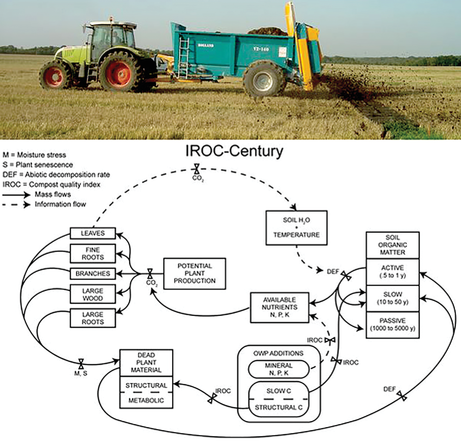Better Model for Organic Waste Additions

In the ongoing quest to reverse the course of anthropogenic climate change, we will demand even more than food and fiber from croplands.
To that end, a long‐term field experiment, QualiAgro, was established to investigate impacts of diverting agricultural and municipal organic waste products to croplands. This practice can reduce reliance on fertilizer, sequester carbon in the soil, and lower greenhouse gas emissions relative to current practices. A collaborative effort resulted in a new ecosystem model version, IROC‐Century, to better represent organic waste additions.
Using the model, which was developed and tested with QualiAgro data, management strategies were optimized to maintain plant production, maximize soil carbon storage, and reduce fertilizer use. Results from the study show how combining organic amendments with nitrogen fertilizer can maintain crop yields, reduce nitrate leaching to groundwater, and increase soil carbon storage.
These long‐term field experiments require a substantial commitment, but they provide essential information that, when coupled with ecosystem models to extrapolate these results across space and time, reveal relatively simple changes in management that can temper the impacts of global climate change.
Adapted from Parton, W. J., Kelly, R. H., Hartman, M. D., Revallier, A., de Faria, A. B. B., Naves‐Maschietto, G., … & Kech, S. (2023). Agricultural and municipal organic waste amendments to increase soil organic carbon: How much, how often, and to what end? Soil Science Society of America Journal. https://doi.org/10.1002/saj2.20529
Text © . The authors. CC BY-NC-ND 4.0. Except where otherwise noted, images are subject to copyright. Any reuse without express permission from the copyright owner is prohibited.











